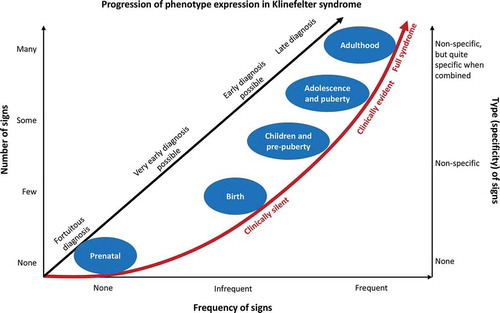Figures & data
Figure 1. Schematic representation of the progression of phenotype expression in 47,XXY Klinefelter syndrome from birth to adulthood. On the left, the scale indicates the number of clinical signs from none to many. On the right, the scale indicates the specificity of clinical signs, from absent and nonspecific, to quite specific when combined. The scale on the bottom indicates the frequency of clinical signs, from none at right to frequent at left. Prenatal, birth, children and pre-puberty, adolescence and puberty, and adulthood ages are indicated, together with a red arrow showing the progression of clinical phenotype from clinically silent to clinical evident and full expression of the syndrome. The black arrow indicates possibilities for diagnosis at the different ages, from the fortuitous diagnosis during prenatal genetic analysis, to the late diagnosis made in adulthood

Table 1. General strategies for early diagnosis of 47,XXY Klinefelter syndrome
